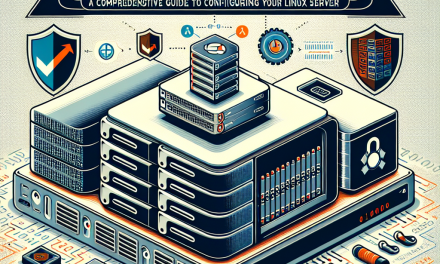As our reliance on digital infrastructure increases, so does the importance of safeguarding this ecosystem against threats. For businesses and organizations running Linux servers, ensuring the integrity of the system is paramount. One effective method to achieve this is through File Integrity Monitoring (FIM) tools. In this article, we will explore the importance of file integrity, how FIM works, and some recommended tools for Linux servers.
Understanding File Integrity Monitoring (FIM)
File Integrity Monitoring refers to a process that monitors and detects changes to files and system configurations. This is crucial in identifying unauthorized access or modifications that could indicate a security breach. FIM systems create a baseline snapshot of files on a server and continually check for alterations, whether they are accidental changes or malicious activities.
Why File Integrity Matters
-
Early Detection of Breaches: By alerting administrators of any unauthorized file changes, FIM helps in identifying and mitigating possible breaches before they escalate into significant threats.
-
Compliance: Many regulatory frameworks require organizations to implement measures that ensure file integrity. FIM can aid in compliance with standards such as PCI, HIPAA, and GDPR.
-
System Recovery: In the event of a breach, FIM can provide insights into what files were changed and when, facilitating faster recovery and response.
- Audit Trails: FIM tools often maintain logs of file modifications, which can be invaluable during audits and investigations.
How File Integrity Monitoring Works
FIM tools utilize a variety of methods to monitor files:
- Hashing: FIM solutions generate cryptographic hashes of files and compare them against known-good values over time.
- File Attributes Tracking: Monitoring modifications to file attributes, such as permissions, ownership, and timestamps.
- Baseline Snapshots: Taking periodic snapshots of the filesystem to compare against later states.
- Real-Time Monitoring: Some tools provide real-time alerts upon detecting file modifications.
Recommended File Integrity Monitoring Tools for Linux
-
AIDE (Advanced Intrusion Detection Environment)
AIDE is an open-source file integrity monitoring tool that performs integrity checks through the use of cryptographic checksums. It allows administrators to create a database of file attributes on the first run and then perform periodic checks against this database. It supports various features, including reporting options and configurations for different types of monitoring.
-
OSSEC
OSSEC is a powerful open-source host-based intrusion detection system (HIDS) that includes FIM capabilities. It offers a comprehensive security solution, including log analysis, rootkit detection, and real-time alerting. OSSEC monitors files using checksums and triggers alerts when changes are detected.
-
Tripwire
Originally developed in the 1990s, Tripwire remains one of the most well-known file integrity monitoring tools. It supports both open-source and commercial versions, and its advanced capabilities include real-time monitoring and reporting features. Tripwire is highly configurable, allowing for detailed specifications on what to monitor.
-
Samhain
Samhain is another open-source solution that combines file integrity checking with host intrusion detection features. It can monitor various Unix-like systems and includes functionality for log file monitoring, rootkit detection, and more. Samhain can operate in a decentralized configuration, allowing it to monitor multiple systems from a central location.
-
Integrity
Integrity is a lightweight file integrity tool that focuses on simplicity and ease of use. It provides a straightforward interface for monitoring its targets and is particularly effective in embedded systems and environments with limited resources.
Best Practices for Implementing FIM Tools
-
Define What to Monitor: Not all files require monitoring. Focus on critical system files, configuration files, and directories where changes could signify a potential threat.
-
Regularly Update Baselines: As applications and systems evolve, make sure to update the baseline snapshots in your FIM solution to avoid receiving constant false alerts.
-
Set Up Alerting Mechanisms: Ensure that your monitoring tool is configured to send alerts to the appropriate personnel so that they can take immediate action when needed.
-
Conduct Regular Audits: Frequent audits using the FIM tools can reveal vulnerabilities and provide assurance that your security posture is strong.
- Integrate with Other Security Tools: Combine FIM with other security solutions, such as firewalls, antivirus programs, and centralized logging tools, to create a robust security strategy.
Conclusion
In an era of growing cybersecurity threats, enhancing the security of Linux servers is essential, and File Integrity Monitoring tools play a vital role in this endeavor. By implementing an FIM solution, you can strengthen your server defenses, gain insights into file changes, and respond swiftly to potential threats. As with any security measure, it’s crucial to regularly review and update your protocols to maintain a resilient security posture.
Investing in FIM tools and practices will not only safeguard your valuable data but also grant peace of mind in the face of an ever-evolving threat landscape. Ensure your Linux servers are protected — start monitoring file integrity today!





